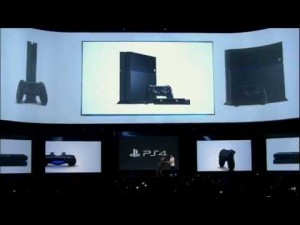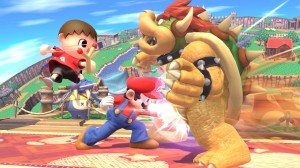Last week I waxed derisive on the failure-bound plans of industry giants Sony and Nintendo. The poor choices exhibited by both companies were enough to earn my ire with regards to Sony’s VR bandwagon jumping and Nintendo’s call to casuals “Quality of Life” announcements. While both of these decisions are not touted as either company’s primary focus I do wonder what resources are being spent unnecessarily on such projects that could be better put toward non-speculative efforts. But I digress because I am here to highlight the brighter side of things that have sprung from the selfsame minds at Sony and Nintendo. As no stranger to either company’s past accomplishments, indeed as a believer that both of these companies have presided over some of the best decisions made for this industry, I find it as easy to laud Sony and Nintendo as it is to reprimand them. Sadly, especially from the Nintendo camp, current events have made it easy for me to become jaded. But, as I promised, some good news has arisen, some positive announcements and steps in the right direction have been made. And though I may be cast as an optimist, I cannot help but feel positive in kind with these developments.
Sony has made many major moves in the right direction and so headlines the discussion. Over the last year, since last June’s E3, Sony has stepped fully out from under the veil of an over confident and out of touch image fostered at the beginning of the previous generation. If that image had been eroding away over the course of the longer-than-average hardware cycle, thanks to efforts like PS+, then last year’s E3 truly shattered what was left of it. In the face of mounting concerns over Microsoft’s always-on DRM policies, Kinect requirements, and used games policies, Sony was not only smart enough not to play along with these ideas but brave enough to call out and made direct comparisons to Microsoft’s decisions. Now, to some degree, MS handed Sony this golden opportunity to garner crowd support by simply allowing Sony to stand in contrast to their arrogant assumptions of what consumers would be willing to put up with. But plenty of credit should still be given to Sony for respecting their consumer and knowing how to protect the business they are in, regardless of MS’s positions on anything.
In a time where “Free-to-Play”, “Pay-to-Win”, “Freemium” and other such nonsense disguised as games has reared its exploitative head, Sony chose a more honest path. However it stands to reason that it is a sad day when simply allowing the consumer to keep the game they purchased, play it on their terms, and lend it to friends is something worth celebrating. This was far from the minds of most watching Sony’s press conference when the crowd erupted in applause at least twice, interrupting Sony America CEO Jack Tretton’s presentation, and cementing Sony’s “Good Guy” role amidst things like evil MS DRM and Facebook acquisitions of VR tech. On top of this, Sony continues to offer an incredible value (for those with the free time to take advantage of it) with PS+ and their online subscription requirements do not hold hostage premium services like Netflix the way Xbox Live currently does. Though Sony has chosen to gate PS4 online play behind their subscription paywall, it comes with the promise of a more universal and improved experience compared to the sometimes dodgy PS3 setup. Overall it has become clear that, through whatever conflux of situations happening to Sony and this industry, that Sony’s offerings this generation are set to be the clear winner for dedicated gamers.
Speaking of which, dedicated gamers will have more reason to smile thanks to key game design choices revealed lately by Nintendo. Hopefully these reasons to smile continue on as the success of these decisions prove to Nintendo the value of catering to the core market. What choices, then? With regards to two anticipated Wii U titles on the horizon, Super Smash Bros. Wii U and Mario Kart 8, Nintendo seems to have shown a return to their competitive multiplayer games of yesteryear. For Smash, game director Masahiro Sakurai has revealed that special competition-oriented stages will be added in a separate multiplayer mode known as “For Glory”, which lies apart from the “For Fun” mode. In For Glory, the items are turned off and play only takes place on static flat stages. While these are not exactly the ideal rules for a competitive Smash setup, I will gladly recognize and applaud this step in the right direction. For Fun mode, by contrast, allows for all items and all stages in a similar fashion to Super Smash Bros. Brawl‘s With Anyone online mode. The idea that Nintendo is recognizing that their games can be played both competitively and for fun is a hugely encouraging sign when previously the competitive demographic was spoken about (even by Sakurai) as a toxic element of the fanbase.
As well, Nintendo showed some very promising design changes in their latest Mario Kart series, Mario Kart 8. Since the second entry of the series on the N64 Nintendo introduced the infamous Spiny Shell or Blue Shell that homes in on the player in first place, and is typically awarded to the players that are lagging behind. The idea behind this is to even the playing field by punishing skill and thereby making winning more likely for more people. From then on Nintendo would pursue this desire to level the playing field in all subsequent Mario Kart games. Thankfully a recent Nintendo Direct showcased the first and only known opposition to this near omnipotent element of the game. The Super Horn is a rare item capable of being obtained even when in first place which, when activated and timed appropriately, can spin out opponents and destroy incoming projectiles including the Blue Shell. This mechanic, along side a strongly emphasized tournament mode and online play help to reclaim the series from the general mediocrity the previous two entries had demonstrated. Long missing mechanics, that I have also heard described more as exploits, like Snaking will probably not make a return and the game’s new Battle Mode is not exactly a throw back to the N64 days of Block Fort or even the SNES days. Instead they are specialized sections of race tracks from the game that combat will take place on. Despite this I remain confident that this game will be the reason I turn on my lonely and dusty Wii U for the first time in months.
So like I promised here I have delivered some more positive happenings from the two most tested names in videogames. I hope that these measures are met with the success they deserve and that this success is received with full knowledge that its sustained application is the most reliable way to be met with yet more successes. Do any of these developments soothe you after the less than savory news I remarked on last week? Any other things either of these companies (or any company, for that matter) are doing in the industry that you either love or loath? Discuss and divulge in the comments!

